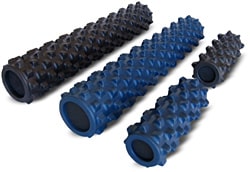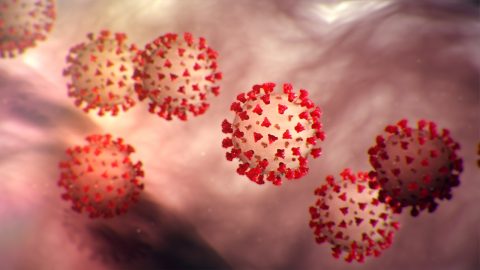XV International Symposium on Atherosclerosis.
(Readers Note: A condensed version of this article can be found in the “In The News” section of the Oct. 2009 issue of The Life Extension Magazine, p23.)
This Symposium – held triennially by the International Atherosclerosis Society – offers the world’s largest presentation of new research and clinical findings regarding Atherosclerosis. This important meeting was held June 14-18, 2009 in Boston MA. As Atherosclerosis is the underlying cause of both heart disease and stroke, which together account for more than half of all mortality and morbidity in developed societies, and is the number one killer of US citizens, making headway against this diseases would result in millions of lives saved. This scientific/medical meeting covered a wide range of topics, from detection, prevention, and treatment of cardiovascular disease to the pathogenesis and biology of this disease as well as intervention, such as lifestyle and drug therapies, that may prevent it from developing in the first place.
The Efficacy Of Statins…
One of the most important talks at this conference looked at the efficacy of statins and was given by a Dr. Kastelein from the Netherlands. There are currently seven versions of this drug available for clinical use: atorvastatin, fluvastatin, lovastatin, pitavastatin, pravastatin, rosuvastatin and simvastatin. Although controversial, the bulk of the data to date finds these drugs can be of clinical value in some populations. According to Dr. Kastelein “Statin treatment markedly improves outcomes of hypercholesterolemia and dyslipidemia patients by lowering their plasma levels of low-density lipid cholesterol (LDL-C), thereby reducing the frequency of primary and secondary cardiovascular (CV) events.”
However he also made it clear that “…despite coronary heart disease (CHD) morbidity and mortality being significantly reduced following treatment with these drugs, it is not eliminated completely.”
Therefore, it’s clear that statin drugs are not a cure-all for this disease, and unless combined with lifestyle changes, such as nutrition and exercise – and possibly nutritional supplementation – these and other drugs may not prevent cardio vascular disease when used alone. Of course, for many, making those needed changes in lifestyle will eliminate the need for a statin drug in the first place, but that is not true in all cases as some people have a genetic predisposition to dyslipidemia and or cardio vascular disease.
Dr. Kastelein outlined a large body of data that examined the efficacy of the statin drugs using various meta analysis reviews, and summed it up that even the best outcomes of these drugs still left a high prevalence of disease: “It has been repeatedly shown that achieving a 25-35% reduction in LDL-C with statin therapy decreases CV risk by approximately one-third, leaving two thirds remaining.”
Thus, It’s clear that as a mono therapy (i.e., used as the only therapy), statin drugs are not the answer to the number one killer of people in industrialized nations, but as part of a combined approach, in certain populations, are potentially useful drugs.
It was encouraging to see at this conference a focus on both lifestyle and nutritional supplements, either alone or in combination with the statin drugs, as potentially effective treatments for cardio vascular disease (CVD).
Omega-3 Fatty acids alone or combined with statin drugs
This conference had an impressive amount of research presented on the many benefits of omega-3 fatty acids either alone, or in combination with various statin drugs. Large amounts of data concluded that omega 3 fatty acids were effective at improving risk factors for CVD, and when combined with statins, more effective then statins alone.
For example, a Dr. Matsuzaki from Yamaguchi University Graduate School of Medicine, outlined the results of a large group of people either on statins (control) or on statins plus EPA (eicosapentaenoic acid, an omega-3 fatty acid) on preventing coronary artery disease (CAD).
This was a randomized trial of EPA + statin (EPA group; n=1,823) versus statin only (control group; n=1,841) in 3,664 patients with established CAD and total cholesterol level of at least 250 mg/dL. The primary endpoint they examined was major coronary events (MCE). This is important to note as most studies look at changes in risk factors for an MCE – such as a change in cholesterol levels – vs. what really matters, which is whether or not the person suffers a heart attack. What’s more interesting to note was this large study found “no significant difference of serum lipid profiles among two groups during the study period.” However, “The incidence of MCE in EPA group was significantly lower than that in control group.”
Just as important, a sub group of people who had already had an MCE, the statin + EPA group suffered significantly lower rates of secondary events then the control/statin only group. On average, the control group had over 20% rate of MCE to the statin plus omega-3 (EPA) groups 15%. Even more encouraging, those who achieved the highest serum EPA levels had the lowest MCE rates, so take your fish oils! This researcher concluded “These results indicate that EPA should be additive to a conventional treatment for the secondary prevention of CAD.”
The above was literally one of dozens of studies presented at this conference that confirmed the benefits of the omega-3 fatty acids (specially EPA/DHA) and found when combined with statin drugs, synergy between them is the result.
DHEA levels predict death from CVD in older men.
A Dr. Ohlsson from the University of Gothenburg presented some very important data that found levels of DHEA and or DHEA-s in older men strongly predicted death by cardio vascular disease (CVD). His group looked at 2,639 men with a mean age 75 years. Tracking these men for 4.5 years, they found 328 deaths had occurred with lowest levels of DHEA and DHEA-s correlating strongly with those deaths. Most important, they found “The association between low DHEA and CVD death remained significant after adjustment for smoking, body mass index, diabetes and hypertension.” This study found Low serum levels of DHEA predict death from cardiovascular disease in older men.
COENZYME Q10 studies…
This conference saw a large number of studies looking at the effects of CoQ10 either alone or in conjunction with statin drugs. Most of the focus was on CoQ10’s ability to counter the well-established drop in CoQ10 tissue levels in those taking statin drugs. One study presented was of particular importance in that it showed the addition of CoQ10 can greatly reduce statin-associated myopathy, which can include pain, weakness, and tiredness as well as other symptoms in those using statin drugs. A Dr. Fedacko, presented findings from his groups double blind study evaluated the possible benefits of CoQ10 and selenium supplementation in patients with statin-associated myopathies.
60 patients were enrolled underwent physical, laboratory – including plasma level of CoQ10 and selenium- at the beginning and after 1 month and at the end of the study. They found Muscle pain, muscle weakness, tiredness, and cramps were present in 40, 21, 22, 18, of the 60 studied respectively yet “All these symptoms improved in the group of patients treated by CoQ10…” However, Selenium supplementation was not associated with a decrease of statin-associated myopathy. They concluded “supplementation with CoQ10 resulted in a decrease of symptoms of statin-associated myopathy which could be associated not only with improvement of quality of life, but compliance to statin therapy as well.”
As mentioned above, this study was one of many that found the addition of CoQ10 to statin therapy to be beneficial. Clearly, CoQ10 is a “must use” supplement for those on statin drugs considering it’s long list of benefits and essentially non-existent risk of side effects.
Niacin Studies…
Another nutrient to get a great deal of attention at this conference – either alone or in conjunction with statin drug therapy – was the vitamin Niacin (vitamin B3). The benefits of Niacin therapy on blood lipids has been well established and covered extensively over the years in the pages of the LEF magazine. This conference further confirmed niacin as a therapy for preventing CVD. Several studies presented showed both alone and in combination with statin drugs, niacin raises HDL, lowers plasma triglyceride (TG) levels, as well as having other beneficial effects on CVD risk factors. This conference had various studies looking at timed released niacin as one way to improve efficacy and reduce side effects. One lecture titled “ARE NIACIN’S SIDE EFFECTS A BARRIER TO ITS USE?” given by a Dr. McGovern outlined what the (perceived and real) side effects are.
According to Dr. McGovern “Niacin’s side effects may be divided into 3 main categories: cutaneous, metabolic, and gastrointestinal.” Cutaneous side effects are the “flushing” (vasodilation) effects which many experience; red skin accompanied by burning, and/or Itching. However, Dr. McGovern stated “newer extended-release formulations of niacin, with aspirin prophylaxis, are associated with discontinuation rates for cutaneous side effects of 6% to 10% in clinical trials.”
A lesser-known side effect of high dose niacin therapy, are potential increases in blood glucose. However, the increase is on average approximately 5 to 9 mg/dL with blood glucose levels usually returning to baseline values within a relatively short time. For people with normal blood sugar metabolism (non diabetics) this should not be an issue. Even for diabetics, these are relatively small changes in blood sugar, and should be easily managed via diet and therapy.
Finally, Gastointestinal side effects – which appear more common among women – include heartburn, nausea, and diarrhea. Dr. McGovern stated these were generally manageable via taking this vitamin with food and slowly titrating the dose upward. He concluded “With proper education and instruction of patients, niacin’s side effects should not be a barrier to treatment…”
Conclusions.
As with any large conference, the above is truly the tip of the proverbial iceberg regarding the large amount of research and information presented at this important conference. Many other nutrients, such as garlic, green tea, various polyphenols, plant sterols, L-arginine, and many others, were shown to be of potential benefit to reducing the risk of CVD – and or as an adjunct therapy to drugs such as the statins – as well as others.
Will Brink is the owner of the Brinkzone Blog. Will has over 30 years experience as a respected author, columnist and consultant, to the supplement, fitness, bodybuilding, and weight loss industry and has been extensively published. Will graduated from Harvard University with a concentration in the natural sciences, and is a consultant to major supplement, dairy, and pharmaceutical companies.
His often ground breaking articles can be found in publications such as Lets Live, Muscle Media 2000, MuscleMag International, The Life Extension Magazine, Muscle n Fitness, Inside Karate, Exercise For Men Only, Body International, Power, Oxygen, Penthouse, Women’s World and The Townsend Letter For Doctors.
He’s also been published in peer reviewed journals.
Will is the author of the popular e-books, both accompanied by private members forum access , Bodybuilding Revealed & Fat Loss Revealed.
You can also buy Will’s other books on Amazon, Apple iBook, and Barnes and Noble.





Good info Will. It is nice to see that the medical community is finding that some supplements are helpful.
It should be noted that the flushing niacin (suprisingly cheaper version of vitamin b3) is the version you want. The no flush version is more expensive but does not raise HDLs. If you ramp the dosage up over time 500mgs for a week, 1000mgs for a week, 1500 mgs for a week… and right around there is the best amount to take… 2-3 grams max… but 2 grams has shown to be very effective at reducing LDLs, improving HDLs and lowering trigs….
flushing niacin 1.5g per day
cardio every day or every other day …running, walking jogging, hiking biking…swimming… parking farther at the grocery store etc….shoot for burning a few hundred calories per day
good fats from nuts, avocados, extra virgin olive oil
keep processed sugary foods to a minimum, no non diet fruit or sodas
and if you like add in 1 alcoholic beverage every day or every other day… not more than 2 in any one sitting…
live forever…LOL
niacin (flushing) works like viagra for both males & females, without neg. side effects. take 20-30 minutes before sex & both can intensely enjoy all the benefits!
have you tried serripeptase? this doesn’t interfere with cholesterol but removes plaque from arteries, opens narrowed arteries & capilliaries. take on empty stomach for best results.
Hello everyone,
I’m a pharmacist (actually about to be, graduating in May). I’ve been a large advocate of adding COQ10 to statin users regimens after reading a few articles on the subject.
Additionally everything that “Hello” says right on the money, never read about Niaspan (extended release formula of niacin not increasing HDL however).
Other good news about the flushing:
“However, most persons develop tolerance to the
flushing after more prolonged use of the drug. Less
severe flushing generally occurs when the drug is taken
during or after meals, or if aspirin is administered prior
to drug ingestion.” (more info about reduction of flushing from ATP III, cholesterol guidelines from 2004)
Also wanted to say great site Will. I love the articles and blogs, and appreciate your continued thirst for knowledge as I share the same characteristic.
Andrew and crew, the above is now the full article from the conference vs the shorter version that was up before. Was just waiting on the LEF magazine to publish first….enjoy!
Did you happen to hear anything about Red yeast rice? I put my girlfriend on it for 30 days and her cholesterol dropped fro 240 to 174 no verifiable side effects.
Life Extension Foundation reports a possible problem with niacin a gram and over can be liver aggravation. so they recommend avoiding time release formulas as the aggravation or damage can usually be repaired and coped with in most individuals if they are allowed most of 24 hours to recover. So take niacin all at once. Niacinamide is not effective at lowering cholesterol but does not aggravate the liver as Niacin does. See lef.org for more. This is usually only a problem with people who already have problems with the liver in the 1st place.
I have some mild occasional problems with liver but take 1 gram of niacin a day without any problems.